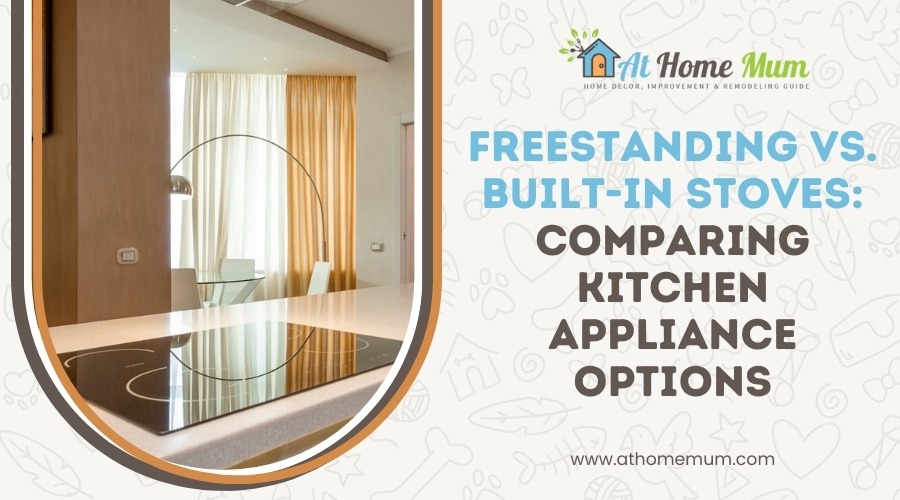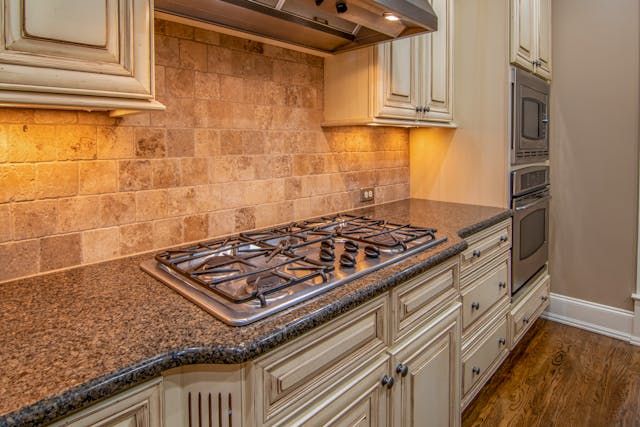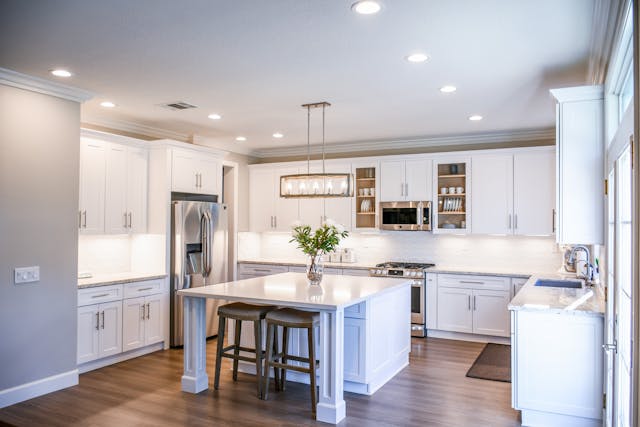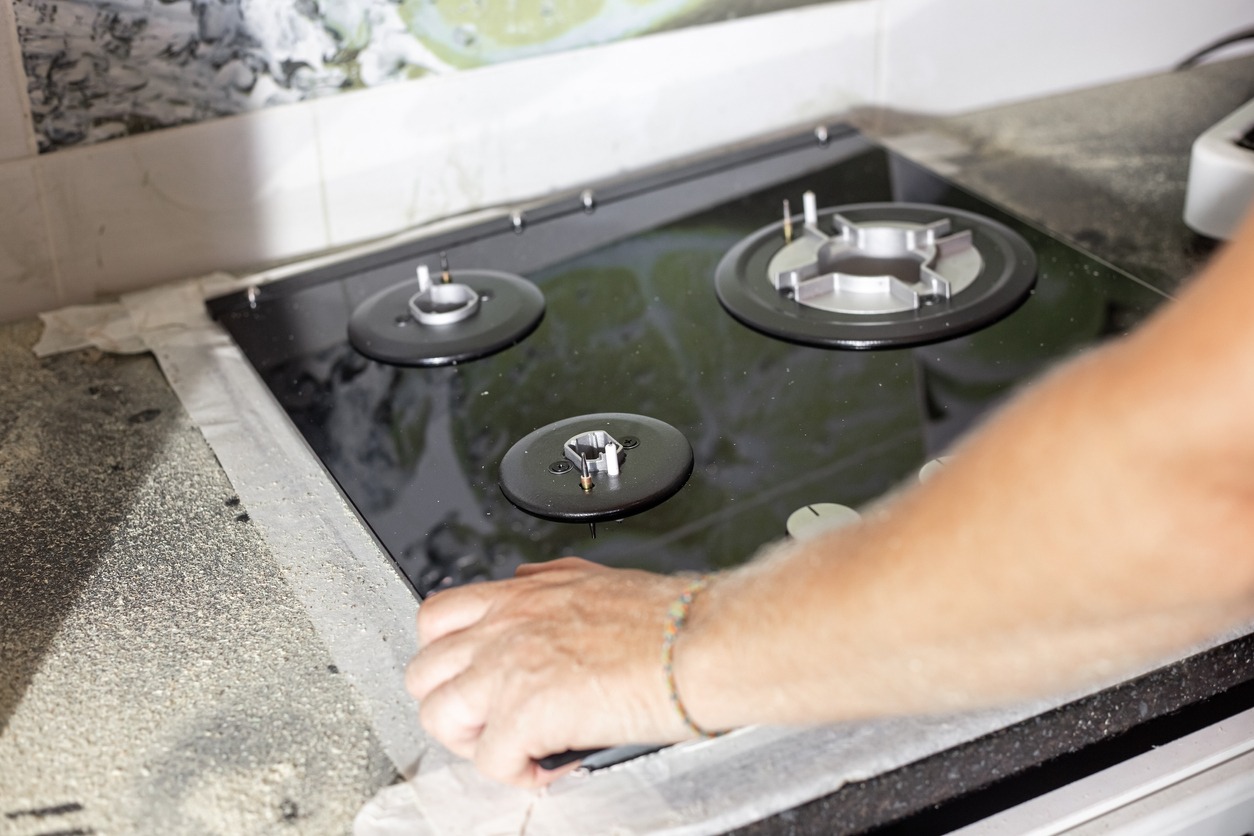When it comes to kitchen design and functionality, the choice between freestanding and built-in stoves is an important consideration for homeowners and designers alike. Freestanding stoves are versatile appliances, characterized by their finished sides and the ability to stand on their own. Their mobility allows them to be placed in a variety of locations within the kitchen. This type of stove often comes with a backguard and controls located on the appliance itself, making them a practical choice for many kitchens.
In contrast, built-in stoves offer a seamless integration with kitchen cabinetry and counters. They provide a more customized and streamlined look, which can be especially appealing in modern kitchen designs. These stoves are typically installed directly into the kitchen’s structure, lending a more cohesive aesthetic to the space. Matching the appliance with the kitchen’s theme can also be easier with built-in options, as they are often designed to align with the existing cabinetry and hardware.
Choosing between freestanding and built-in stoves will ultimately depend on a variety of factors, including kitchen layout, design preferences, budget considerations, and desired features. Each option presents its own set of advantages, and the selection process involves balancing aesthetics with functionality to achieve the desired outcome for the kitchen space.
Design and Aesthetics
When considering stoves, design and aesthetics play significant roles in the decision-making process. They directly influence the kitchen’s overall look and how integrated the appliances appear with the existing cabinetry and style.
Integrated and Seamless Appeal
Built-in stoves offer a seamless look as they are designed to blend with the kitchen cabinetry. They typically don’t have finished sides, positioning them flush with the existing counters and cabinets. This integration is particularly beneficial in ultra-modern kitchens, where a built-in look is often the preferred style to maintain clean lines and an uncluttered appearance.
Style and Kitchen Design
Style choices and kitchen design largely dictate whether a freestanding or built-in stove is more suitable. Freestanding stoves are versatile and can complement various design styles, as they are available in a range of appearances from vintage to contemporary. They have finished sides and back panels, giving homeowners the freedom to place them wherever they fit best within the kitchen layout.
Types of Stoves
Choosing between freestanding models and built-in ovens and cooktops involves considering installation flexibility, aesthetic integration, and the desired type of cooking technology.
Freestanding Models
Freestanding ranges offer the advantage of easy installation and a flexible design that includes both the cooktop and oven in one appliance. They stand on their own, usually featuring finished sides which allow them to be placed anywhere in the kitchen. Freestanding stoves typically come in gas or electric options and can be more budget-friendly upfront. Most provide a range of features to cater to various cooking needs.
- Pros:
- Easier to install and move around
- Often more cost-effective
- No need for custom cabinetry
- Cons:
- Can be less energy-efficient compared to some built-in models
- Less seamless appearance in kitchen design
Built-In Ovens and Cooktops
Built-in ovens and cooktops are designed to be integrated into the kitchen cabinetry. This gives them a seamless, custom look that many homeowners prefer. Built-in ovens can be installed at wall level, making them more accessible, while cooktops can be installed over base cabinets or on kitchen islands. They often come in various types, including induction, gas, or electric, providing efficient energy use and precision cooking. While they usually require a higher initial investment, built-in appliances are considered to add more value to the home.
- Pros:
- Custom, integrated design
- Higher energy efficiency, particularly induction cooktops
- Potential increase in home value
- Cons:
- Higher upfront cost
- Installation can be more complex and costly
- More challenging to replace if remodeling is desired
Installation and Space Considerations
When considering freestanding versus built-in stoves, space configuration and the installation process are two crucial factors that impact kitchen design and functionality.
Space Configuration
Built-in stoves are integrated into the kitchen layout, often surrounded by cabinetry. They are designed to fit seamlessly, which can save valuable floor space. However, they typically require a precisely delineated area. In contrast, freestanding stoves offer flexibility in placement and can be easier to incorporate into various kitchen spaces since they stand alone with finished sides and do not necessitate alterations to existing kitchen cabinets.
- Built-In Stoves: Require measured kitchen space and cabinetry modifications.
- Freestanding Stoves: Flexible placement, suitable for a variety of kitchen layouts.
Installation Process
The installation of a built-in stove requires preparation and often professional assistance to ensure it fits within the allocated cabinet space and complies with safety standards. This process can include cabinetry work and adjustments to existing kitchen structures.
- Built-In Stoves:
- Cabinet modifications may be necessary.
- Professional installation is often recommended.
For freestanding stoves, installation is generally more straightforward. They are designed to slide into place after the cabinetry is installed, operating independently of it.
- Freestanding Stoves:
- Minimal setup; typically just requires connection to power or gas.
- Easily replaceable without affecting surrounding cabinets.
Functionality and Performance
In discussing freestanding versus built-in stoves, it is crucial to evaluate their functionality and performance, particularly in terms of cooking features and advanced cooking functions which have significant implications on cooking efficiency and user experience.
Cooking Features
Freestanding stoves are commonly known for their versatility and ease of installation. They often feature a range with an oven and cooktop, providing a comprehensive cooking solution. Users typically find them with standard multifunctional cooking settings, such as baking, broiling, and roasting. Moreover, many freestanding models are equipped with a convection oven, which circulates hot air for a more even and expedited cooking process.
Advanced Cooking Functions
Built-in stoves tend to appeal to those seeking a streamlined kitchen aesthetic and often include more sophisticated technologies. A hallmark of built-in units is their steam cooking capability, which cooks food using steam and preserves nutrients and flavors. They might also offer more precise temperature controls for intricate cooking tasks. Additionally, the performance of built-in stoves can be enhanced with customizable settings, allowing for unique cooking modes and programming that accommodate a variety of dishes and culinary styles.
Appliance Matching and Integration
When considering appliances for a kitchen, matching sets and seamless integration play a crucial role in achieving a coherent design aesthetic and functionality.
Matching Sets
Manufacturers often offer matching sets of appliances, which include stoves, refrigerators, and dishwashers. These sets are designed with a consistent style, finish, and features, enabling homeowners to maintain a unified look throughout the kitchen. For instance, a brand may provide a line of appliances all finished in stainless steel with similar handle designs, making it easier for consumers to select complementary pieces.
- Consistent Aesthetic: Purchasing a matching set ensures all appliances share a common design language.
- Streamlined Selection Process: It simplifies decision-making, as all pieces are from the same series within a brand.
Seamless Appliance Integration
Seamless appliance integration refers to the method of installing kitchen appliances, such as built-in stoves, so that they blend smoothly with the cabinetry and countertops. This approach often involves panel-ready designs, where the front of the appliance is fitted with a custom panel that matches the kitchen cabinetry.
- Built-In Appliances: They are designed to fit flush within a kitchen’s cabinetry, creating a smooth and continuous look.
- Refrigerators: Can be fully integrated with custom panel doors that match the cabinetry, making them virtually indistinguishable from other storage spaces.
- Dishwashers: Often feature panel-ready options for a coherent appearance with the surrounding kitchen cabinets.
Benefits of Integration:
- Creates a cohesive and high-end aesthetic.
- Optimizes space in the kitchen, as appliances are designed to fit precisely within allocated cabinet dimensions.
By focusing on matching sets and seamless integration, individuals can achieve both aesthetic harmony and functional elegance in their kitchen’s design.
Pros and Cons
When choosing between freestanding and built-in stoves, consumers must weigh the advantages and disadvantages tailored to their kitchen space, design preferences, and cooking habits.
Advantages of Freestanding Stoves
- Flexibility: Freestanding stoves are versatile and can be easily placed anywhere in the kitchen. They are not bound to a specific location, as they do not require custom cabinetry.
- Cost-Effective: Generally, they are less expensive than built-in units. This makes them an attractive option for those on a budget.
- Installation: The ease of installation is a significant plus for freestanding stoves, which can be simply pushed into place without the need for professional help.
Disadvantages of Built-In Units
- Higher Cost: Built-in units often come with a higher price tag, both for the appliance itself and the installation, which may require customization of cabinetry.
- Complexity in Installation: As they need to be integrated into the kitchen cabinetry, built-in stoves might require more intricate installation processes, which can be time-consuming and require professional assistance.
- Inflexibility with Layout Changes: Once installed, built-in stoves do not offer the easy flexibility to rearrange your kitchen layout should you wish to make changes later on.
Economic Considerations
When selecting between freestanding and built-in stoves, economic factors play a crucial role for consumers. This section will compare prices and discuss budgeting strategies for kitchen equipment selection.
Price Comparison
Freestanding stoves often come with a lower initial price tag compared to built-in models. They can be a more affordable choice, as they generally do not require customization or extra cabinetry. The absence of installation costs can result in notable savings.
- Typical price range of freestanding stoves: $400 – $2,000
- Typical price range of built-in stoves: $600 – $3,000+
Built-in stoves, while usually more costly upfront, can add value to a home due to their seamless integration into kitchen design. Their prices vary considerably based on features and brand reputation.
Budgeting for Kitchen Equipment
When budgeting for kitchen equipment, consumers should account for total cost of ownership which includes purchase price, installation fees, and long-term energy efficiency.
- Freestanding stoves may be more budget-friendly due to:
- No installation costs
- Wide range of affordable models
- Combined oven and hob, which may reduce the need for separate appliances
- Built-in stoves should be budgeted with considerations such as:
- Higher initial investment
- Potential cabinetry alteration costs
- Installation expenses by a professional
Buyers must balance the initial price against long-term cost benefits, like lower energy use, when choosing the best stove type for their budget and kitchen layout.
Maintenance and Upkeep
When considering freestanding versus built-in stoves, maintenance and upkeep are crucial factors. They play a significant role in the longevity and reliability of the appliance.
Ease of Cleaning
Freestanding Stoves:
- Typically, freestanding stoves offer easier access for cleaning due to their detached placement from cabinetry.
- Their sides and rear are often finished, which means they can be fully accessed for a more thorough clean.
Built-in Stoves:
- Cleaning around built-in stoves can be more challenging due to their integration with surrounding fixtures.
- Some built-in models feature smooth surfaces that align with countertops, creating fewer crevices for food particles to accumulate.
Maintenance Requirements
Freestanding Stoves:
- Maintenance for freestanding stoves usually involves standard, accessible repairs.
- They provide the advantage of being easier to remove or replace, which can enhance their reliability and serviceability.
Built-in Stoves:
- Built-in stoves may require professional assistance for maintenance due to their fixed installations.
- Given their integration with kitchen units, regular checks may be necessary to ensure cabinetry does not affect stove performance.






